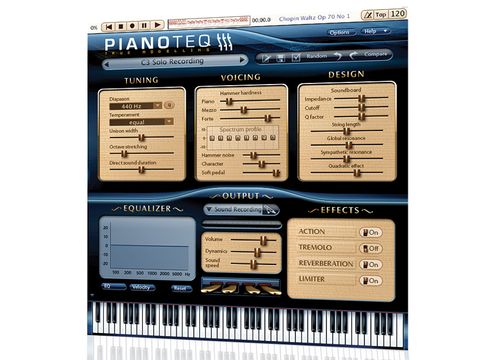

Over that time, the makers added an array of contemporary and historic models, expanding the instrumentation with harpsichords, electric keyboards, chromatic mallets and exotica such as celeste, cimbalom, tubular.
Review pianoteq 5 pro#
Users of the standard version can make fully use of all exciting presets created by other users (available in the FXP corner), including those created by Pianoteq PRO 6 users: any preset created with Pianoteq Standard 6 or Pianoteq PRO 6 produces exactly the same sound in Pianoteq Standard 6 and Pianoteq PRO 6. The progress of Modartt’s intriguing Pianoteq virtual instrument has been well charted in these pages, starting with my evaluation in January 2007 and continuing through Robin Bigwood’s series of articles, which culminated in his very positive review of Pianoteq 5 in April 2015. New exciting possibilities open up as you explore the parameters and discover sounds that you have never heard or thought of before. You can even modify the mechanical properties of the soundboard.

Some things can hardly be done in the real world, such as changing the string length from a mini grand of 1m/3.3ft to an imaginary giant grand of 10m/33ft. With just a few mouse clicks, you can achieve things that would require hours, or even weeks, by piano technicians to adapt on real acoustic pianos. The possibility to shape the sound through physical parameters is an extraordinary feature that cannot be found in any other piano software. It also lets you position up to 5 microphones around the instrument and to choose from a selection of different microphone brands. It is a natural choice for the semi-professional musician who wants to adjust unique physical parameters such as unison with, microtuning, hammer hardness, soundboard, and string length. The Pianoteq Standard 6 version offers several powerful tools for sound shaping and recording.


 0 kommentar(er)
0 kommentar(er)
